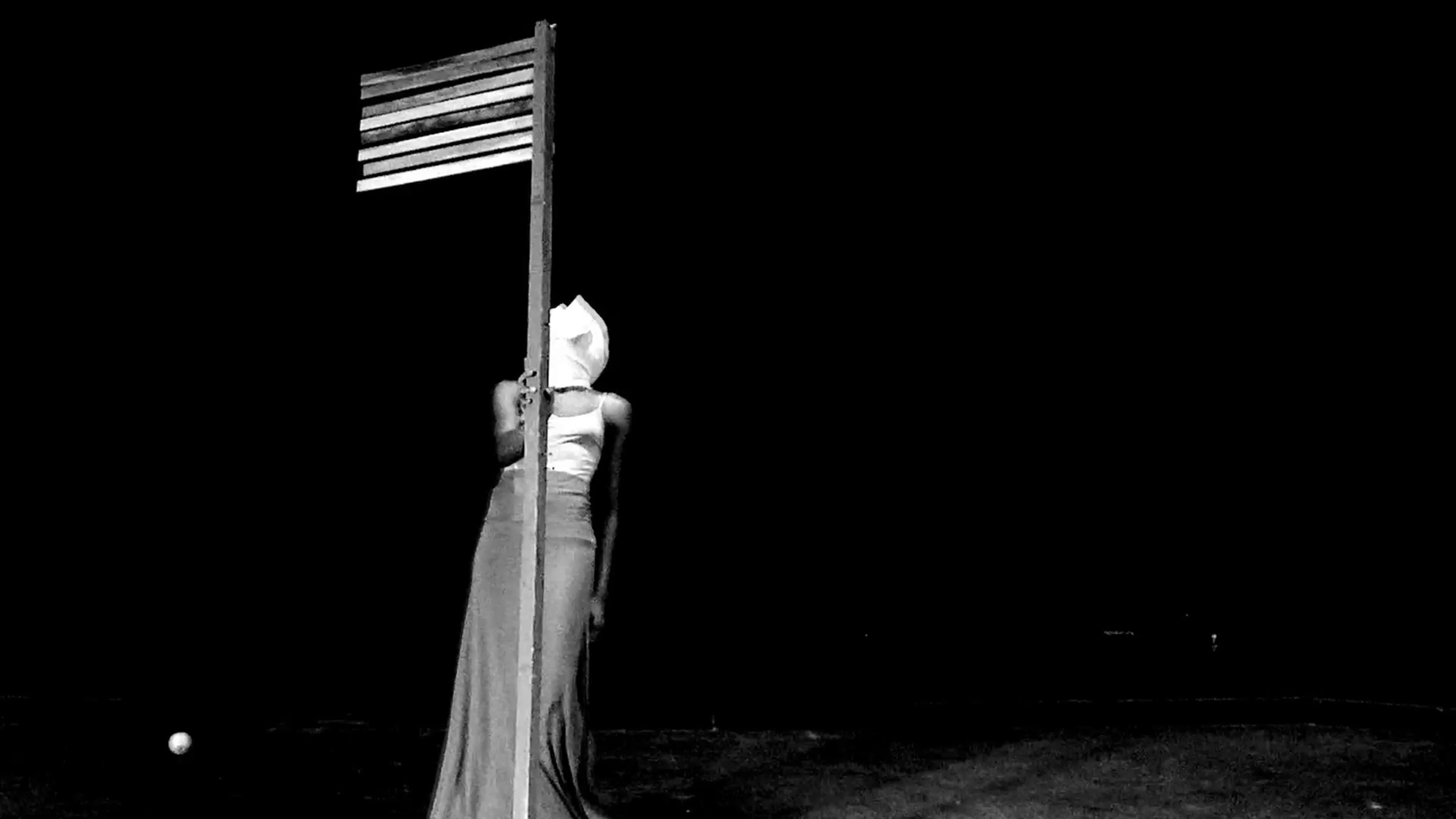anticipated artist in person: Christopher Harris
presented by San Francisco Cinematheque and San Francisco Museum of Modern Art
in association with the Canyon Cinema Foundation
Admission: $12 general/$10 Cinematheque and SFMOMA members with member code
Advance tickets available here.
Join our Facebook event.
CROSSROADS' festival opening program presents restless views of the new American century. Silenced voices of resistance speak across the rising tides and howling winds. Resilient speculative futures emerge from the dystopian present.
SCREENING
H-E-L-L-O (2014) by Cauleen Smith; digital video, color, sound, 11 minutes, exhibition file from the maker bay area premiere
The 1977 film Close Encounters of the Third Kind was one of Steven Spielberg’s most successful films. Its place in the contemporary imagination may have waned, but its influence on science fiction lore and aesthetics endures. The film’s title comes from a classification system devised by American astronomer Dr. Josef Allen Hynek. Dr. Hynek’s book describes three levels of encounters with unidentified flying objects. “Close encounters of the third kind” are defined as “UFO encounters in which an animated creature is present. These include humanoids, robots, and humans who seem to be occupants or pilots of a UFO.”
The gregarious aliens in Spielberg’s film use light and sound patterns to teach humans how to communicate with them. Composer John Williams devised an enigmatic five-note sequence (g—a—f—F—G) that repeats throughout the film. When the Mothership lands on top of Devils Tower in Wyoming, the melody becomes legible as a greeting (H-E-L-L-O) and a foundation for decoding alien language.
G-A-F-F-G < > H-E-L-L-O. A simple greeting dispensed as an exchange, a furtive gesture of recognition, goodwill and curiosity. An indomitable spirit has been a New Orleans constant throughout its grand and convoluted history. As a “new” New Orleans emerges and the community-based practices of cultural traditions move to the outer rings of the city—rather than remaining nestled within the Mississippi River’s disinherited crescent remains—there may be some elements granted as “everyday New Orleans” to which its inhabitants must say good-bye. But with an ear pressed to the ground, one might hear a resonant eternal love song for and from the city’s low end: deep funky electric bass lines, crawling river sediment deposits, thundering sousaphones, a plaintive lion’s roar, a riverboat salutation, the sub-Saharan foot stomp of a captive elephant or the long, slow slide of the trombone. Trombonist Michael Watson showed up for our river levy recording session wearing a T-shirt—one he disclosed to be his favorite—that said, “Listen to Your City.” Listen indeed. And say Hello. (Kelly Gabron, Chicago 2014)
The Two Sights (2015) by Katherin McInnis; digital video, black and white, sound, 4 minutes, exhibition file from the maker
Ibn al-Haytham’s Book of Optics debunks theories that the eyes emit rays or that objects project replicas of themselves, and accurately describes the strengths and weaknesses of human vision. The Two Sights is a false translation of this work, using images from the Life magazine photo archive. (Katherin McInnis)
Playing Possum (2013) by Jamilah Sabur; digital video, black and white, sound, 12 minutes, exhibition file from the maker bay area premiere
A love letter to death. Elijah by Mahalia Jackson was playing in the studio and I slipped into a trance, the only goal was “becoming.” When a possum is under threat, it plays dead to avoid death. The space in the studio became a world I felt close to—I was underwater on the moon. In composing the video during the editing process, I composed a score for the first two-thirds but used American composer Jon Forshee’s score Sinew as the structure to edit the video. I wanted to create an atmosphere in the video that appears to be like the changes in ambient pressure, like what happens to a body that slips into the cold airless void, when the human body is suddenly exposed to the vacuum of space or deep water—sudden depressurization. (Jamilah Sabur)
Birth of a Nation (2017) by Jem Cohen; digital video, color, sound, 10 minutes, exhibition file from Gravity Hill
Birth of a Nation was shot in Washington D.C. at the inaugural of Donald Trump and including subsequent protests. Unreal events in an unreal landscape bring in new realities. (Jem Cohen)
Restless (2016) by Robert Todd; digital video, color, sound, 8 minutes, print from the maker world premiere
Changing winds, shifting moods, stirring, awaiting… (Robert Todd)
Sine at the Canyon Sine at the Sea by Kelly Gabron (2016) by Cauleen Smith; digital video, color, sound, 7 minutes, exhibition file from the maker bay area premiere
Sine at the Canyon Sine at the Sea began as a video designed to be background eye-candy at an outdoor performance event and evolved, at the invitation of Chris Stults and Genevieve Yue, into a protest against the reverberations of the neo-fascist nonsense percolating in American culture right now. (Cauleen Smith)
Colour My World (2017) by Mike Hoolboom; digital video, color, sound, 3 minutes, exhibition file from the maker world premiere
Three-part colour inquiry. Questions adapted from Frederick Douglass to Jericho Brown bring the hurt. The images have been soaked in water until everything recognizable has been stripped away, leaving behind a wash of colours, a bacterial flow. (Mike Hoolboom)
Distant Shores (2016) by Christopher Harris; digital video, color, sound, 3 minutes, exhibition file from the maker bay area premiere
A sunny afternoon on an architecture tour boat in Chicago is haunted by the specter of the European refugee crises as a disembodied narrator recounts a much more dangerous voyage across altogether different waters. The hazardous journey is the unseen other of the carefree trip down the Chicago River and across Lake Michigan. (Christopher Harris)
Pictured above: Playing Possum (2012) by Jamilah Sabur
CROSSROADS 2017 is generously supported by: National Endowment for the Arts, Fleishhacker Foundation, Grants for the Arts, Zellerbach Family Foundation, George Lucas Family Foundation, Owsley Brown III Philanthropic Foundation and the Willow Foundation.
With thanks to our festival sponsors:

